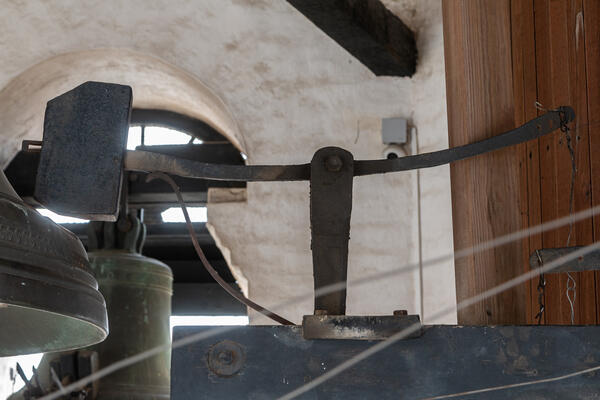The Demidov Leaning Tower of Nevyansk is a unique monument of industrial architecture, built in 1722–1732 according to the style of Old Russian tented towers and bell towers. It consists of a quadrangle and three gradually decreasing octagonal tiers with balconies. The tower was a multifunctional structure that acted as a clock tower, watchtower and served to alert the population about a fire.
On the first and second octagonal tiers of the tower there are chiming clocks, ordered by Akinfiy Nikitich Demidov and installed in the 1730s. They consist of mechanical and musical mechanisms, as well as bells.
The musical mechanism of the chimes consists of a programmed metal cylinder, on which, in accordance with the programmed melodies, rows of pins press the lever-keys when the shaft rotates. Wire rods with hammers stretch from the levers, which strike the bells located on the second octagonal tier of the tower. The bell part of the chiming clock consists of 10 copper English bells made in 1730, striking the quarters and half hours and playing melodies, and one Nevyansk bronze bell made in 1732, striking the hours. The musical shaft operates every 3 hours (at 3, 6, 9, and 12 o’clock) 8 times a day.
By the mid-1970s, the chiming clock of the Leaning Tower of Nevyansk was in a deplorable state and looked like a dilapidated mechanism, covered with a considerable layer of dirt and rust. In 1974–1976, the process of restoring the watch was led by Nevyansk factory worker Alexander Ivanovich Sakantsev. 3,109 parts, including 2,186 pins for the musical shaft, were made for the restoration.
According to information from 1907, the chimes played 18 pieces of music. In 1913, the melody “God Save the Tsar” was programmed onto the quarter shaft, and in 1946 the “Wide is My Native Country…” melody.
During the restoration, Alexander Sakantsev discovered the initial markings, which indicated the number of tracks with programmed melodies — there were 20 of them. The melodies were recorded on sheet music by the teacher of the Nevyansk children’s music school, Galina Mikhailovna Khakimzyanova. The notes and sound recording of the melodies were sent to the Ural State Conservatory, where Sergey Ivanovich Sirotin, a senior lecturer in the department of music theory, member of the Union of Composers of the USSR, confirmed that the chime mechanism had been restored to its original form.




